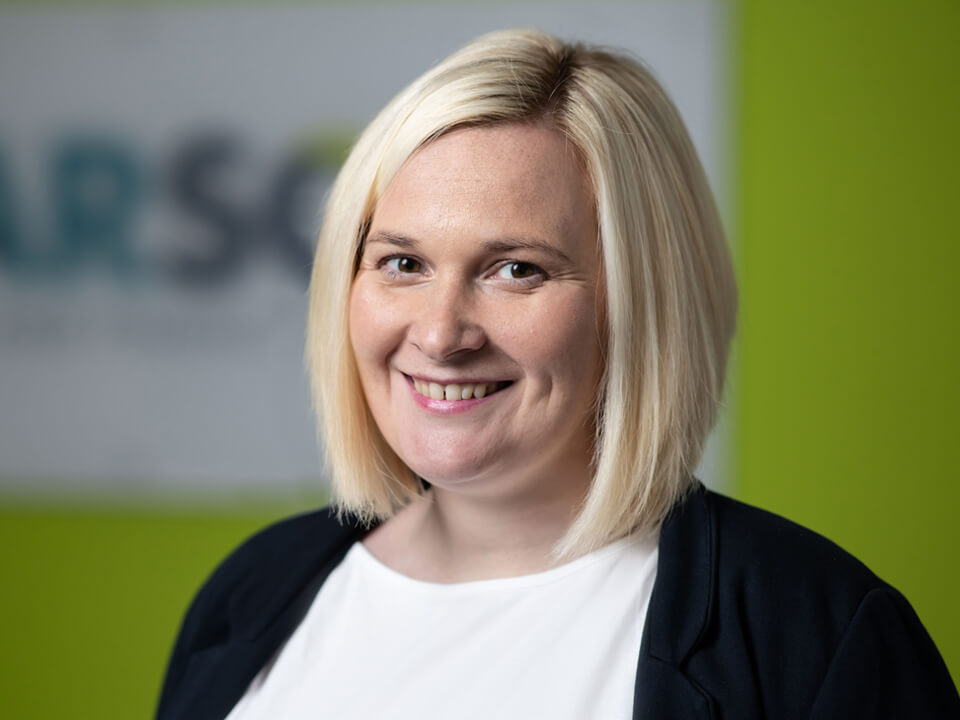A conveyancer’s blog – what it’s really like to move house
Victoria Marshall is one of our conveyancing team. In Autumn 2016, she shared her own experiences of moving house. By blogging about some of the issues and niggles that arose after she made an offer on her new house, Victoria gave some insights into what it’s like to buy a house – and the conveyancing processes involved. All her posts about the move are collated on this page.
Contact
To find out more about the conveyancing process, contact Victoria Marshall on 0161 785 3500 or make an enquiry. You could also scroll down for a list of useful conveyancing FAQs, guides and articles.
Dealing with delays in the conveyancing process
Posted 11 September 2016
(Tip: our FAQs contain explanations of the technical conveyancing words shown in bold.)
Well... the summer is coming to an end and as a purchaser it seems like the process is taking ages!
As a conveyancing solicitor myself, the delays are something I'm used to. Checking the legal title and getting everything right can take a while. In addition, the long summer holidays can lead to some delays with the people involved taking their annual break.
I've just recently received the contract package after one of those common delays. Unfortunately, it also arrived incomplete and I've had to chase a couple of documents.
In the meantime, I'm getting on with carrying out the usual searches to check that:
- the roads are adopted. (If they are not, I would be liable in the future for the maintenance of the road myself);
- no local land charges are registered against the property;
- there's no chance of subsidence by doing a ground search;
- there are access rights (to ensure there are no problems getting onto and off the land and into the property); and
- there’s no contaminated land.
In addition, I'll also need to do:
- Local authority searches which will reveal for example whether the house is in a conservation area, whether there is anything in the vicinity that might cause problems such as whether a planning permission has been granted on properties nearby that might adversely affect the property;
- a Mining search. (The house I'm buying is in an area known for mining in the past and I will therefore be making relevant searches to ensure the house was built on stable land with no risk of subsidence); and
- a chancel repair liability search because there is a Church near the house which potentially could mean if any repairs/maintenance are required that they could call upon us to contribute.
All these search results will ensure there are no hidden problems with the house I'm buying. I don't want to move in and find that there are additional costs to living there – or the potential of subsidence because it's built over an old mine!
What about the cost?
Fees are charged for all these searches which I will have to pay for. These fees are added to the overall conveyancing bill and often referred to as disbursements.
What's next?
My next step will be to ask the seller's solicitor to give additional information about a variety of issues such as whether there are any disputes relating to the property, any rights of way across the property, who the utilities providers are, what the boundaries are (and whether there are any disputes on the boundaries) and whether there are any guarantees in place or other restrictive agreements affecting the property.
At least I've got my mortgage offer in place. I've got enough money saved for my deposit and I've got no house to sell. So, fingers crossed, I'm still hoping that I can complete on the sale by October.
We'll see...
FAQs
Click here to find out more about the following:
- Why do we use the word conveyancing?
- How do I deal with delays in the process
- What's involved in buying a property and instructing a solicitor?
- What's in a contract package?
- As a buyer, what do I need to do when I receive the contract package?
- What costs (known as disbursements) can I expect to pay for?
Articles
What happens when a property search reveals a problem?
Posted 23 September 2016
(Tip: our FAQs contain explanations of the technical conveyancing words shown in bold.)
I've had some good and bad news about my property searches. The results are back in good time but they've revealed that the roads around “my” property have not been formally “adopted” by the local authority.
Councils “adopt” new roads
It’s normal after a housing development is finished for the relevant local authority to adopt the new roads and therefore take over their upkeep. This is done by the developer and the local authority entering into a section 38 agreement (see FAQS below). However, to ensure that the developer has done a proper job in constructing the roads, the developer will hand over some money to be kept as a bond by the local authority and that bond will be used if the adopted roads need repairs.
Apparently, however, there is a bit of land at the entrance to the estate that was missed out of the section 38 agreement between the developer and Oldham Council and this position has not been rectified despite the housing development being over 10 years old. To make matters worse, the Council is arguing that that bit of road is not up to the right standard. This unadopted land also cuts off the rest of the estate from the adopted highway, which is another reason why the council will not adopt the rest of the estate.
So, as it stands, this means that the Council is refusing to adopt the roads and will not use the bond to pay for the required road works. Consequently, if the developer does not step up and carry out those works, the residents on the road (and that would include me!) could be liable for road repairs in the future.
What’s the solution?
It is the developer’s responsibility to bring the roads up to standard otherwise the responsibility will ultimately fall on the residents. In short, if this issue is not resolved it could fall on me as the homeowner along with the other residents to make good the road at our expense until it is adopted.
Technically, there is a solution: the title documents to the property do show that there are some covenants (contract terms) under which the property developer promised to maintain the road at its cost until it is adopted. Covenants like this are binding on the developer but in my professional experience as a conveyancer, I know just how difficult and expensive it is to enforce them. It would take time and involve plenty of argument and negotiation with the developer. It could even result in me and my new neighbours having to take the developer to court to force them to meet their obligations. That is not a pleasant prospect!
What happens when a search reveals a problem?
It is not advisable to progress a purchase until problems such as the road adoption have been dealt with. I have raised the issue with the seller's conveyancer and asked them to resolve it. The estate agent has assisted at this stage by relaying my request direct to the seller. This enabled my seller – being a current resident of the estate - to make telephone calls direct to the developer to say if this is not resolved, the residents will seek legal advice about enforcing the covenants from which they benefit.
The developer has now promised to write to us to assure us that the making good works will be carried out by Christmas to allow Oldham Council to adopt the road.
Completion in October? (I’m still hoping so!)
On other issues, I've got good news as my lender has confirmed they are happy for me to get on with drawing up the transfer document and exchanging contracts. It's a small step forward that keeps me hopeful I might just complete and get the keys to my new home in October.
FAQs
Click here to find out more about the following:
- What happens if the roads haven't been adopted?
- What is a section 38 Agreement?
- What is a covenant?
- What is the contract agreement?
- What happens on completion of a property purchase?
Getting stuck in a property chain
Blog posted: 4 October 2016
(Tip: our FAQs contain explanations of the technical conveyancing words shown in bold.)
I'm feeling a little frustrated this week. Little progress seems to have been made. I am still waiting for copies of the planning documents so that I can check that all the enquiries I made on the property have been answered satisfactorily. Until I am happy with the answers, I will not even attempt to discuss dates for completion of the purchase.
What's a property chain?
There is however, another snag – albeit a fairly common one. It appears I'm stuck in a "property chain" and, unfortunately, the chain is extremely long.
A property chain is a series of connected property purchases in which each transaction depends on another being completed. So for example, imagine a chain of a dozen or more home owners trying to buy a property, but unable to complete their purchase until the people they're buying from have completed their own conveyancing processes. Then factor in that most of the buyers will be trying to sell a property too. It's a conveyancing nightmare but a surprisingly common one and one that house hunters should be prepared for.
Dreading a break in the chain
Property chains can be nerve-wracking too: the chain can be easily broken. It only takes one purchaser to back out for the links in the chain to collapse. Maybe one party finds itself in financial difficulties following an unexpected redundancy. Or maybe a selling party decides to "gazump" its buyer by accepting a higher offer from a third party. However it happens, it means that another buyer/seller has to be found and causes a delay along the whole chain.
I'm crossing my fingers that my chain holds strong!
Conveyancing Panels
I have a double whammy too. Not only is there a long chain, but also the seller's solicitor can only act for her on the sale but not on her onwards purchase as her firm are not on the mortgage lender's panel. This means she is having to use two different solicitors firms – one for her sale and one for her purchase.
Where does this leave my purchase?
The net effect is that all the solicitors in the chain are discussing a date for completion but I am also struggling to get the vendor's two sets of solicitors to check where the other is up to. (Thankfully, Pearsons in on most mortgage lenders' panels so it's not a problem I often come across when I'm acting!)
I'm still hoping to exchange in readiness for a completion late this week. It's exasperating but I'm trying to stay open minded about the actual date. I know full well that I have absolutely no control over when it will be. So for the time being, I'm limiting myself to making the odd call to the seller's solicitor to check on progress.
FAQs
Click here to find out more about the following:
- What is a property chain?
- What is Gazumping?
- What are conveyancing panels?
The build up to completion
Blog posted: 7 October 2016
Tip: there are explanations for the words in bold at the end of the blog.
Finally! We've completed... and we're in!
I've completed the purchase of my new house and my family and I am now preparing the house so we can move in. It's a great relief knowing that we'll be in ready to celebrate my daughter's 1st birthday next month.
It's been such a busy week as I tried to tie up all the loose strings on my enquiries and the contract documents. But despite the property chain, we got there in the end.
Let me take you though my completion week...
Monday to Tuesday - still waiting for a date
There was lots of toing and froing between me and the seller's two solicitors - you'll remember the seller had one solicitor for her conveyancing and one to represent the mortgage lender. There were a few issues outstanding that were niggling me relating to unknown rights and copy planning documents. While some were sorted (like obtaining documents direct from the local authority), it was clear that I wasn't going to get satisfactory answers to some of my queries so I reached a compromise. That involved me taking out an indemnity policy – which the seller will pay for and which will protect me financially if some of the unresolved issues end up causing me loss in the future.
Wednesday – the day before completion
On Wednesday, although we had agreed a date for completion for the next day (Thursday), there was no exchange of contracts at this point. It is now quite common for exchange and completion to take place on the same day. The good old days of two weeks between exchange and completion are long gone: no body is willing to wait around any more!
That said, no exchange at this late stage is still a little nerve-wracking for buyers as there is no guarantee that the purchase will actually take place. With me being part of a long chain, there was still scope for various things to go wrong – and if they had done, I would have had no rights to take any action to recover the costs and time I had spent on the conveyancing. I would simply have lost the chance to buy the house and would have to bear the wasted costs.
The position is different after exchange: the buyer will have paid a deposit and the parties are legally bound to complete. If the buyer backs out from the purchase, the seller is entitled to keep the full deposit. It is quite rare for parties not to complete after exchange.
So, with one day to go, I carried out a few essential checks including:
a few pre-completion final searches against the title of the property to ensure nothing has changed;
a call to my bank to ensure the mortgage / purchase monies were ready to be transferred;
a visit to the property to ensure it remained as I remembered. (I always recommend this step to my clients because once exchange has taken place, there is little that can be done.)
Thursday – completion day!
Completion days for buyers are busy and can be exciting, stressful and tiring. I always remind my clients to remember all the practical things – right down to making sure you've kept the kettle handy for when you first arrive at your new home.
I arranged for our accounts team to transfer my purchase monies to the seller's solicitors as soon as possible. This is an important step when there is a property chain: the vendor has to use these funds to send on and pay for her purchase and so on down the property chain. Her sellers can't move into their onwards purchase until they have keys and my vendor will have nowhere to move her things to until she has the keys.
These various onward payments can take a while and I was expecting it to be after lunch before my property was fully vacated. In the end, the seller delivered the keys to me at 3pm.You can see my relief from my twitter post: https://twitter.com/VikkiSweeney!
My dad being a decorator comes in handy as he has already painted my daughter's room pink so she can move in very soon.
No rest for the wicked - I'm straight back into work today as I have lots of clients who are just as anxious as me to move into their new homes. I often warn clients that the conveyancing process won't be stress free as we - the conveyancers - cannot control it all. However, our estate agents, Habitat and mortgage adviser, Richard Barber have been a great help in keeping us in the loop to ensure we could identify any problems and resolve them.
Now where did I put the mugs...? (My dad will be needing a cup of tea with all I've got planned for him!)
FAQs
Click here to find out more about the following:
- Exchanging contracts
- What happens on completion of a property purchase?
- What is an indemnity policy?
What does your conveyancer do after you've completed?
Blog posted: 28 October 2016
(Tip: there are explanations for the words in bold at the end of the blog.)
It's been three weeks since I completed on my new home and I'm still enjoying its novelty. Even better, I'm relieved to report that my dad stepped up to the challenge and my daughter's nursery now boasts freshly painted pink walls.
I've also bagged one of our latest Pearsons' conveyancing freebies: a shopper's key ring while we've still got them... our supplies don't tend to last long in the office!
On the legal front, most people don't have much contact with their conveyancer after completion. As I carried out my own conveyancing, I'm getting on with tidying up the paperwork myself but I thought you'd like to know what's involved.
The seller's conveyancer will send the transfer deed and supporting documents to the buyer's conveyancer. The transfer deed is the important document which tells the Land Registry the house should be put into the buyer's name. We submit this to the Land Registry once we receive it together with the signed mortgage date to enable the Land Registry to update the register. Once it is updated, they send to us official copy entries to the Land Register. These entries show the title to the property in the new owner's name.
Whether acting for a buyer or seller, I will have prepared and sent our bill for conveyancing fees and disbursements to our client before completion. Preparing the bill and a statement of the monies needed to complete the transaction (including stamp duty tax) enables me to calculate what funds the client needs to arrange to send to us so that we can pay for the purchase on completion. If our client is the seller, it enables me to calculate the exact balance of monies I must send to the client after completion.
(At Pearson Solicitors and Financial Advisers, we offer our conveyancing service for a competitive fixed fee plus disbursements. A client should therefore receive no surprises when they receive our bill/statement of account.)
The buyer's conveyancer will arrange to pay Stamp Duty Land Tax. This is a "must do"!
As the buyer's conveyancer, I'll check with the client whether they want Pearson Solicitors and Financial Advisers to store the title documents to their new property for safekeeping. If they do, we package up the documents and store them in our secure facility where they can be made available on request.
In certain circumstances, I will advise my client to review their inheritance plans and take some financial planning advice – if they didn't do so before the purchase. Buying a house is one of life's big events and can change the buyer's financial situation. Even those who have already got a will, should review it after buying (or selling) a house.
Articles, guides and tips for those buying or selling a house
If you have found your new home or are considering a house purchase, you can download our Our step-by-step conveyancing guide to buying and selling your home.
In addition, see the following FAQs and articles.
- Frequently Asked Questions about the Conveyancing process
- Frequently Asked Questions about our Conveyancing service (including how we charge)
- It's essential to investigate your chosen property before you exchange contracts.
- Conveyancing Blog: some tips (and a little bit of help) for first-time buyers
- An increase in fraud in #conveyancing transactions. Don’t be conned!
- About to complete on a house purchase? Be aware of bogus emails claiming to be from your solicitor
- Making sure everything's "quite right" on a property transaction
- Landowners must take responsibility for knotweed blight
- Christmas, Twixtmas and New Year House Moves (for those contemplating putting their house on the market before Christmas)
- Local Housing Market buoyant after Brexit
- Shortlisted for the "Best Small Conveyancing Firm" of the year
- Help to buy ISA gets thumbs up from Pearson’s property lawyers
- We will check out #flood reports before you buy a house
- Insurance cover relief for owners of flood risk properties
Please note that the information and opinions contained in this article are not intended to be comprehensive, nor to provide legal advice. No responsibility for its accuracy or correctness is assumed by Pearson Solicitors and Financial Advisers Ltd or any of its members or employees. Professional legal advice should be obtained before taking, or refraining from taking, any action as a result of this article.
This blog was posted some time ago and its contents may now be out of date. For the latest legal position relating to these issues, get in touch with the author - or make an enquiry now.





